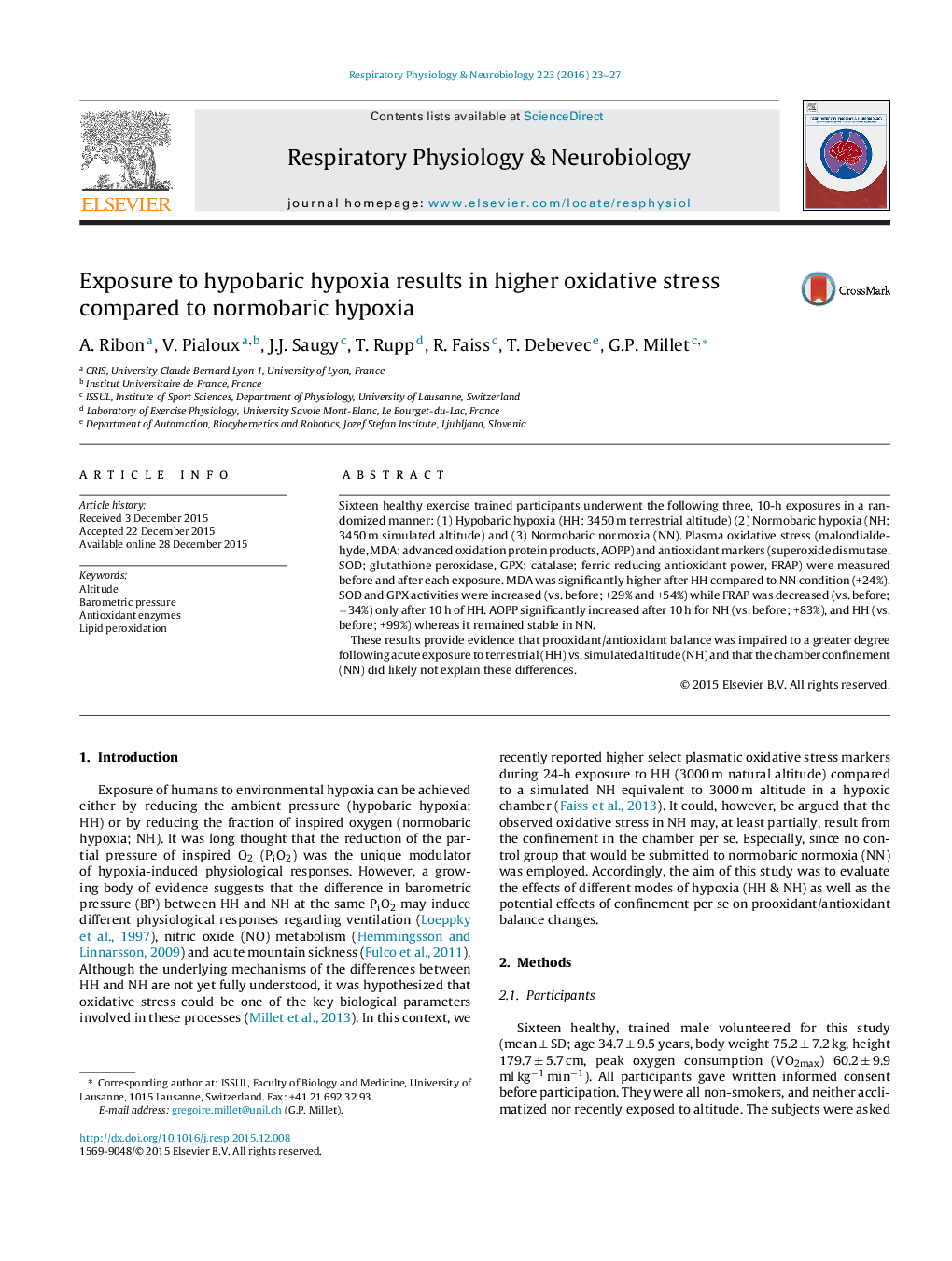| Article ID | Journal | Published Year | Pages | File Type |
|---|---|---|---|---|
| 5925863 | Respiratory Physiology & Neurobiology | 2016 | 5 Pages |
Sixteen healthy exercise trained participants underwent the following three, 10-h exposures in a randomized manner: (1) Hypobaric hypoxia (HH; 3450Â m terrestrial altitude) (2) Normobaric hypoxia (NH; 3450Â m simulated altitude) and (3) Normobaric normoxia (NN). Plasma oxidative stress (malondialdehyde, MDA; advanced oxidation protein products, AOPP) and antioxidant markers (superoxide dismutase, SOD; glutathione peroxidase, GPX; catalase; ferric reducing antioxidant power, FRAP) were measured before and after each exposure. MDA was significantly higher after HH compared to NN condition (+24%). SOD and GPX activities were increased (vs. before; +29% and +54%) while FRAP was decreased (vs. before; â34%) only after 10Â h of HH. AOPP significantly increased after 10Â h for NH (vs. before; +83%), and HH (vs. before; +99%) whereas it remained stable in NN.These results provide evidence that prooxidant/antioxidant balance was impaired to a greater degree following acute exposure to terrestrial (HH) vs. simulated altitude (NH) and that the chamber confinement (NN) did likely not explain these differences.
